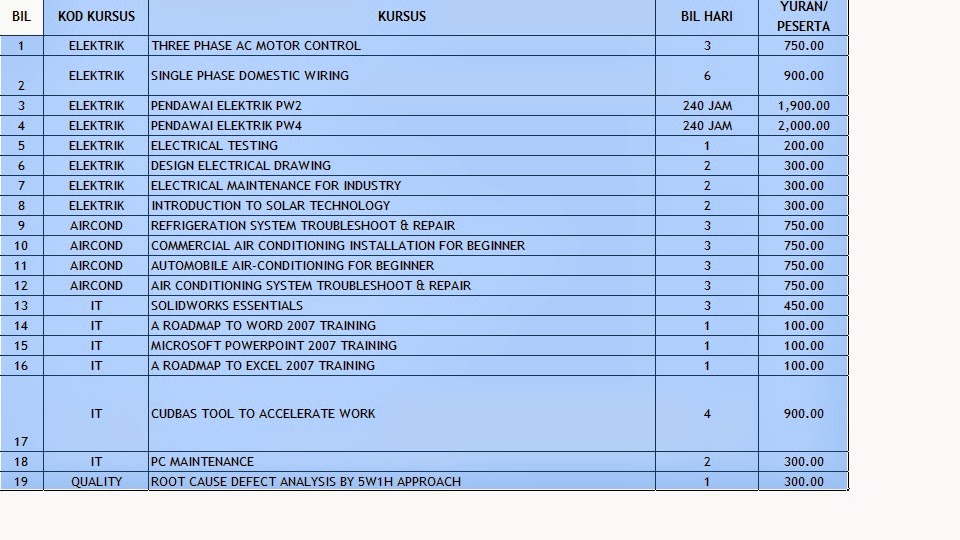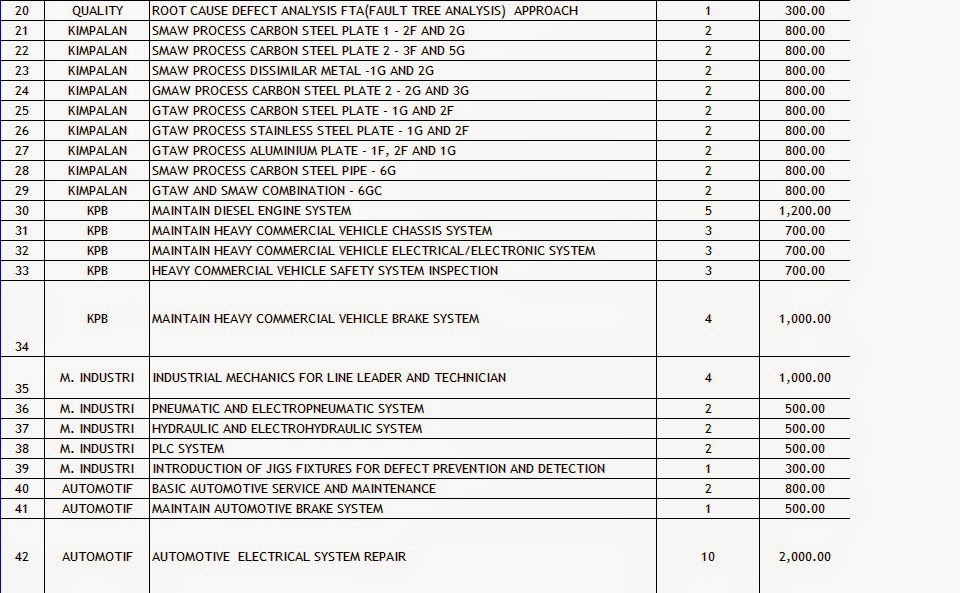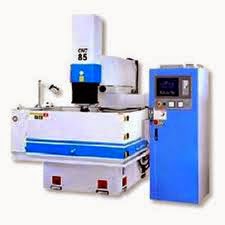Introduction
Electric discharge machining (EDM) is process that
uses electrical sparks to machine metals into desired shape. EDM is usually
used for hard metals or those that would be difficult to machine with
conventional techniques. Using Computer Numerical Control (CNC) technology, EDM
process is made accurate and programming method can be simplified for effective
production. This course focuses on EDM die sinker process where electrode is
used to create cavity on the workpiece. Participants will have opportunity to
learn the basics of CNC EDM die sinker process including operation method and
programming.
Target Group
This course is suitable for persons from machining
related industries for example machinist or machine operators who want to learn
how to operate a CNC EDM die sinker machine. This course is also suitable for
experienced personnel who wish to refresh their knowledge in EDM.
Prerequisites
This course is a basic-level course. Prior knowledge
of CNC is not necessary to enroll in this course.
Objectives
Upon completion of the course, the participants should
be able to:
Use proper and safe procedure
for operating a CNC EDM machine
Write simple programs for EDM
Determine appropriate machining conditions based on work piece or product requirement
Determine proper tools for machining
Test run program on an actual CNC EDM
Write simple programs for EDM
Determine appropriate machining conditions based on work piece or product requirement
Determine proper tools for machining
Test run program on an actual CNC EDM
Content
The Basics
a.
Machining preparation &
setup
b.
Method of clamping &
confirming parallelism
c.
Operations during machining
d.
Configuration of portable
operation panel
e.
Manual operation
Operating using the main panel
a.
Basic functions
b.
Address keys & numeric
symbols
c.
Machining status display areas
Model plan menus
a.
Machining model plan
b.
Positioning model plan
c.
Measuring model plan
d.
Auxiliary model plan
Programming
a.
Program structure and format
b.
Using the Edit screen
c.
Programming input example
Machining
a.
Electrode reduction
b.
Automatic machining operation
c.
Machining method
d.
Jump pattern and setting
e.
Model monitor screen
f.
Selection and use of model data
g.
Model plan applications
h.
G & M code explanation /
examples
Training Method
Training will be delivered through short lecture, demo
and practical lesson. The emphasis for this course is on hands on practical
sessions.
Schedule
Day 1
08:30 a.m. Registration
09:00 a.m. Introduction
/ preparation & set-up for machining
10:30 a.m. Break
11:00 a.m. Operation
with portable operation panel
01:00 p.m. Lunch
02:15 p.m. Model
plan menus and explanations
05:00 p.m. End
of day 1.
Day 2
08:30 a.m. Program
structure & standard format
10:30 a.m. Break
11:00 a.m. Automatic
machining operation
01:00 p.m.
Lunch
02:15 p.m. Model
plan applications / cutting
05:00 p.m. End
of day 2
Day 3
08:30 a.m. G
and M codes explanation and examples / project
10:30 a.m. Break
11:00 a.m. Cutting
/ Project
01:00 p.m. Lunch
02:15 p.m. Question
& Answer
05:00 p.m. Closing
ceremony
Fees
Companies sending their employees to this course may apply for reimbursement
from Human Resource Development Fund under the SBL scheme.







